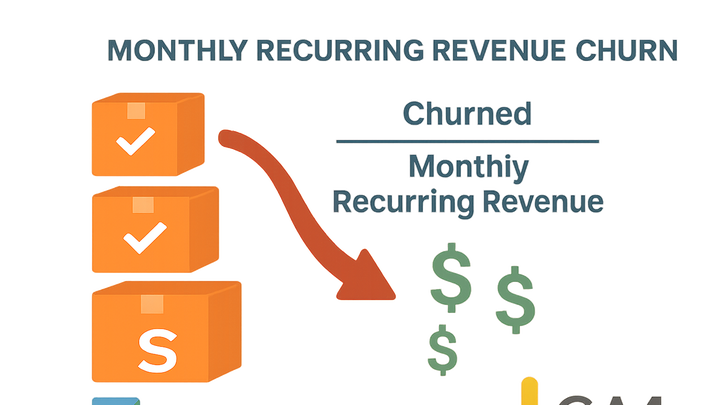Published on 2025-06-22T08:25:29Z
What is MRR Churn? Definition, Calculation, and Examples
Monthly Recurring Revenue (MRR) Churn is the percentage of revenue lost due to subscription cancellations and downgrades over a given period. Unlike customer churn, which counts lost accounts, MRR Churn focuses on the actual dollars lost, making it a critical metric for subscription-based businesses that measure revenue health. Tracking MRR Churn helps companies understand how much of their predictable revenue base is eroding each month. It is calculated by comparing the revenue lost in a period against the revenue at the beginning of that period. Businesses often distinguish between gross MRR Churn, which ignores expansions, and net MRR Churn, which factors in upgrades and cross-sells. By analyzing MRR Churn, companies can make data-driven decisions around customer success strategies, product improvements, and pricing models to drive sustainable growth.
Mrr churn
Metric showing revenue lost from subscription cancellations or downgrades within a period.
Why MRR Churn Matters
Understanding MRR Churn helps businesses gauge the health of their subscription revenue and predict future growth or contraction.
-
Revenue impact
MRR Churn quantifies the exact dollar amount lost from downgrades and cancellations, directly affecting the company’s recurring revenue.
-
Growth forecasting
High churn rates can offset new sales, making it difficult to project net revenue growth accurately. Monitoring MRR Churn ensures more realistic forecasts.
-
Investor confidence
Investors and stakeholders closely watch churn metrics; a stable or declining MRR Churn rate signals strong customer retention and business health.
How to Calculate MRR Churn
The basic formula measures the lost MRR for a period relative to the starting MRR. Variations distinguish between gross and net revenue impacts.
-
Gross mrr churn rate
Gross MRR Churn focuses solely on revenue lost from downgrades and cancellations. Formula:
(Churned MRR ÷ Starting MRR) × 100.-
Churned mrr
Total monthly revenue lost due to plan downgrades and cancellations.
-
Starting mrr
Total recurring revenue at the beginning of the period.
-
-
Net mrr churn rate
Net MRR Churn accounts for both losses and gains from existing customers. Formula:
[(Churned MRR – Expansion MRR) ÷ Starting MRR] × 100.-
Expansion mrr
Additional revenue gained from existing customers upgrading or expanding their plans.
-
Tracking MRR Churn with Analytics Tools
You can track and calculate MRR Churn using analytics platforms like PlainSignal and Google Analytics 4 by sending revenue events and analyzing them in dashboards.
-
PlainSignal (cookie-free analytics)
Insert the PlainSignal tracking snippet on your billing or subscription pages to capture cancellation and upgrade events. For example:
<link rel="preconnect" href="//eu.plainsignal.com/" crossorigin /> <script defer data-do="yourwebsitedomain.com" data-id="0GQV1xmtzQQ" data-api="//eu.plainsignal.com" src="//cdn.plainsignal.com/plainsignal-min.js"></script>Then configure custom events like
subscription_canceled,plan_downgraded, andplan_upgradedwith revenue parameters to compute MRR changes. -
Google analytics 4 (GA4)
In GA4, enable Enhanced Measurement or send manual events for subscription changes:
- Use
gtagor Google Tag Manager to firepurchaseevents withvalue(MRR amount) andcurrencyon cancellations and upgrades. - Create custom Explorations or Reports in GA4 to sum values for churned and expanded revenue, then apply the MRR Churn formulas.
- Use
Strategies to Reduce MRR Churn
Reducing MRR Churn requires proactive retention efforts, product enhancements, and flexible subscription policies.
-
Enhance onboarding
Deliver personalized setups, tutorials, and resources so customers quickly realize value and are less likely to cancel.
-
Proactive customer success
Monitor usage signals to identify at-risk accounts and intervene with support, training, or tailored offers before churn occurs.
-
Iterate on product feedback
Gather customer feedback continuously and ship improvements that address pain points, boosting satisfaction and loyalty.
-
Offer flexible plans
Provide downgrade or pause options instead of outright cancellation to retain some revenue and keep customers engaged.
